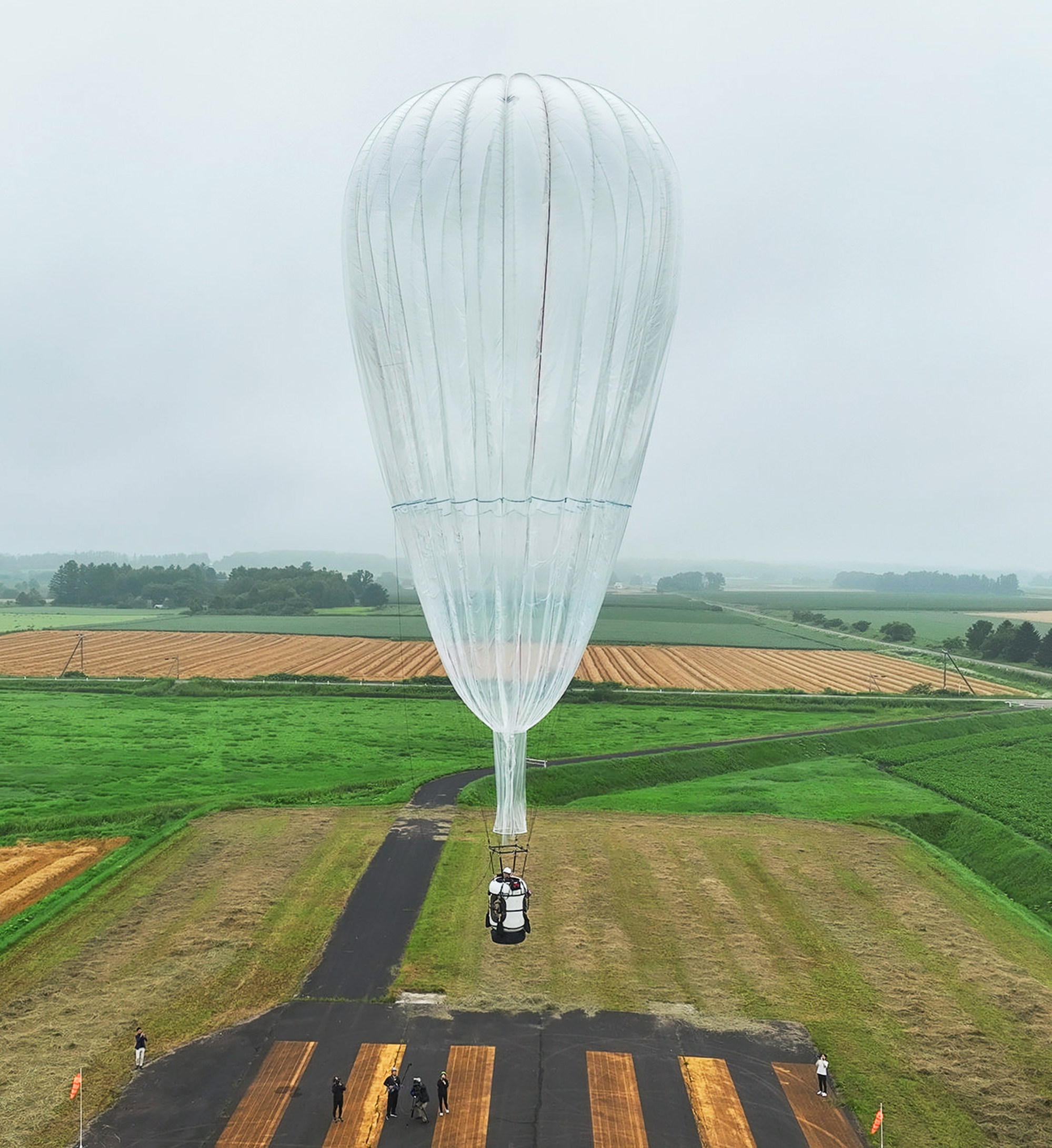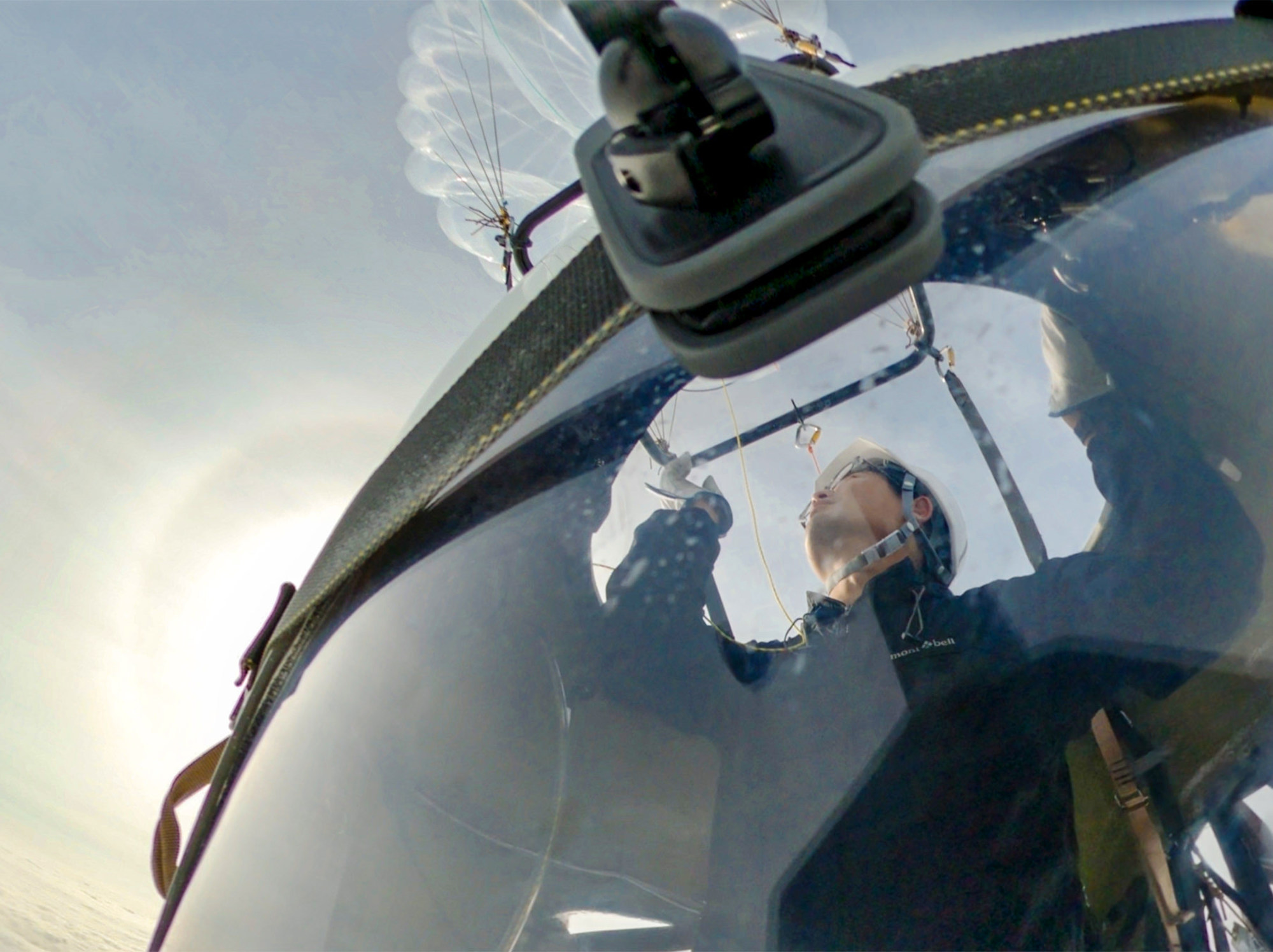
Travel to the edge of space in a balloon – at a price: for US$164,000, a Japanese start-up is promising stunning views of Earth from 25km up
- A Japanese start-up aims to send people into the stratosphere in a helium balloon. On a recent test flight over Hokkaido, its balloon reached an altitude of 6km
- It is targeting a height of 25km, from where you can see the ‘spectacle of the blue Earth’. It will not come cheap – rides will cost US$164,000 a head initially
A start-up in Sapporo, Hokkaido, hopes to popularise high-altitude travel by sending people into the stratosphere in a helium balloon from Japan’s northernmost main island, enabling them to view a stunning spectacle of Earth from above.
In a manned test flight in late July, the balloon reached a record-high altitude of 6km (19,700ft). It is expected to attain its final target, a height of 25km, by the end of 2023.
In the morning haze of July 23, the helium-powered balloon quietly lifted off from Iwaya’s testing site in the district of Tokachi in Hokkaido.

Akihito Oikawa, 35 and part of the start-up’s space development section, was inside the single-seat cabin 1.1 metres wide and 1.5 metres high, which hangs below the balloon, as it immediately rose into the air and out of sight.
After reaching a height of 6,072 metres, gas was released and the balloon descended. Roughly two hours later, Oikawa landed in a field 26km away from the launch site.
The test flight was the venture’s first manned attempt to reach an altitude of 6km. The balloon, which is some 25 metres in height measured from the bottom of the cabin, can reach an altitude of 11km.
Because breathing becomes difficult at an altitude of over 4km, the airtight cabin is made of special plastics resistant to outside air pressure and temperatures.
The craft is equipped with a machine capable of sustaining those inside by maintaining a breathable atmosphere, through controlling components such as the cabin’s oxygen and water vapour levels.
Iwaya says it will be able to achieve an even greater altitude with a larger balloon.
Iwaya was founded in April 2016 by Keisuke Iwaya, 37, who studied aerospace engineering at Hokkaido University with the goal of making “near-space tourism by balloon” a reality.
More than 35 of the company’s employees have flown aboard the craft for flight training and data collection.
While outer space is generally considered to be at an altitude exceeding 100km, the “spectacle of the blue Earth” can be observed from the stratosphere at 25km altitude, the company said.
Iwaya has already begun accepting applications from the public for high-altitude tours. It is planning to conduct its first commercial flight by March 2024.

Although a four-hour ride will cost 24 million yen (US$164,000) per passenger, the company says it has received applications beyond its expectations.
Successful applicants are likely to be announced in early October and to receive an orientation in November and December.
The company has joined hands with travel agencies as part of its efforts to “reduce the cost to around 1 million yen in the future”, Keisuke Iwaya said.
The company will first aim to achieve a manned flight up to an altitude of 12km before trying to reach its ultimate 25km goal later this year.

